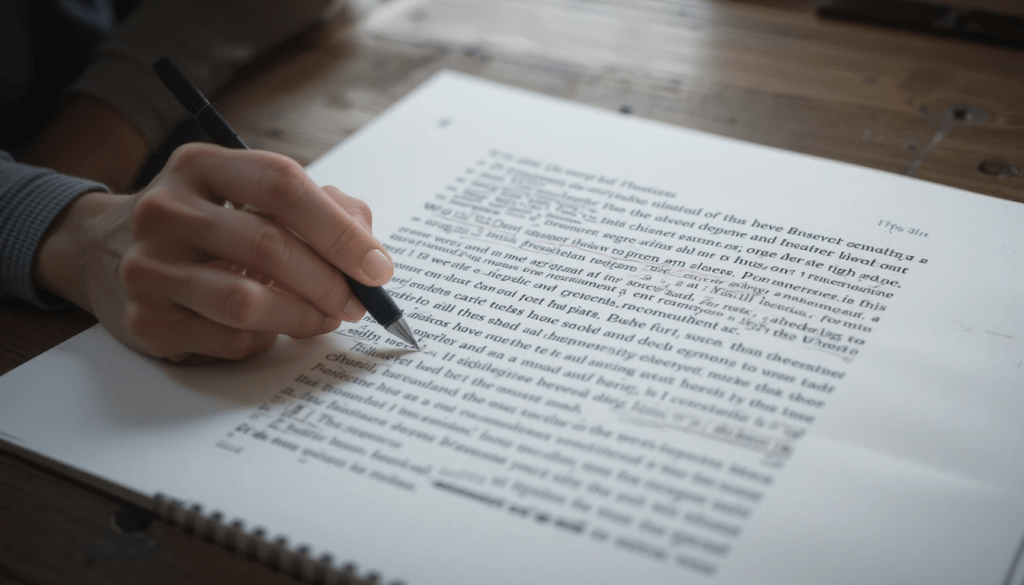Writing a research paper is my personal nightmare, y’all. I’m slumped in my tiny Denver apartment, surrounded by empty Red Bull cans, a pile of library books I haven’t opened, and a sink full of dishes I swore I’d do last week. My cat’s batting at a crumpled Post-it, and my laptop’s screen is glaring at me with a blank Word doc. I’m 30, grinding through community college part-time while working retail, trying to write a paper without having a full-on meltdown. Here’s my sloppy, honest take on a step-by-step guide to write a research paper in 2025, with all my dumb mistakes and research paper tips I’ve learned the hard way.
Why Writing a Research Paper Makes Me Wanna Cry
I’m absolute trash at writing a research paper. I once turned in a draft with a typo that said “pubic policy” instead of “public policy”—my professor’s face was pure pity. But research writing is a must for students. I read on Purdue OWL that a good research paper can make or break your grade, so figuring this out is clutch. These academic writing tips are my attempt to not bomb my next paper.

My Step-by-Step Guide to Write a Research Paper
Here’s my paper writing guide to write a research paper without losing your mind. I’ve tried these steps, screwed ‘em up, and learned a bit.
Submit and Breathe: Turn it in and celebrate with a burrito. You earned it.
Pick a Topic You Don’t Hate: Choose something you’re kinda into. I picked urban farming ‘cause I like plants.
My Dumb Moment: I chose a topic on quantum physics once and had no clue what I was doing. Dropped it fast.
Do Some Recon: Google Scholar’s your friend for legit sources (check it here).
Cringe Alert: I cited a random blog once and got roasted by my professor. Stick to peer-reviewed stuff.
Make an Outline: Scribble a rough plan to keep your thoughts from spiraling. I use bullet points in my notebook.
Write a Shitty First Draft: Just get words down. Mine are always garbage, but you can fix it later.
Oops: I wrote 500 words of fluff and had to delete it all. Painful.
Nail Your Thesis: Make a clear point you’re arguing. I learned this from Purdue OWL (read here).
Cite Like Your Life Depends on It: Use APA or MLA, whatever your prof wants. I use Zotero to keep track (check Zotero).
My Fail: I forgot to cite a source and got docked points for plagiarism. Never again.
Edit Like a Maniac: Read it out loud to catch dumb mistakes. I sound like an idiot, but it works.
Get Feedback: Show your draft to a friend or tutor. My classmate caught a huge error in mine.
Polish the Intro and Conclusion: Make ‘em punchy. I rewrote my intro three times to not bore people.
Embarrassing Bit: My first intro was so bad my friend said it read like a Yelp review. Ouch.
Proofread Again: I miss typos like “pubic” vs. “public.” Triple-check everything.

How I Keep Screwing Up Writing a Research Paper
Real talk: research writing is not my vibe. I once spent three hours formatting citations instead of writing my intro—classic procrastination. Here’s what I’ve learned from my chaos:
- Start Early, Yo: Don’t wait ‘til the last minute. I pulled an all-nighter and my paper was trash.
- Use Legit Sources: Wikipedia’s fine for a quick look, but don’t cite it. I learned that the hard way.
- Keep It Simple: I tried using big words to sound smart and confused everyone, including myself.
- Ask for Help: My college’s writing center saved my butt (check your school’s resources).
The University of North Carolina’s writing guide says outlining can cut your writing time by 30%, which I’m trying without messing it up again.
Finding Your Own Way to Write a Research Paper
Figuring out how to write a research paper is like picking a coffee order—personal and a little stressful. Here’s my advice, straight from my Red Bull-soaked desk:
- Know Your Style: I write best at night when it’s quiet. When’s your brain on?
- Start Small: Don’t try to write the whole paper in one go. I did and crashed hard. Break it up.
- Use Tools: Zotero’s free and makes citations less painful. Mendeley’s good too (check Mendeley).
- Check Your Work: I read my paper out loud to catch dumb errors. Sounds nerdy, but it works.
Wrapping Up My Research Paper Chaos
So, yeah, I’m still a hot mess at writing a research paper, sitting here in my Denver chaos with my cat judging my life choices. I’ve cried over bad grades, eaten too many burritos while procrastinating, and still forget to save my drafts half the time. But these research paper tips have kept me from totally bombing. Check out Purdue OWL or UNC’s writing guides for more academic writing advice if you’re curious.
Outbound Links (Suggestions):
- Pop Culture Reference/Funny Source: A link to a funny article or video about common research paper struggles, like “The 7 Stages of Writing a Research Paper (According to GIFs).”
- Personal Blog/Helpful Tool: A link to a blog post from a reputable (but not overly formal) academic resource or a popular citation manager’s helpful guide. For instance, a simple guide on “Why Zotero Will Save Your Academic Life.”




